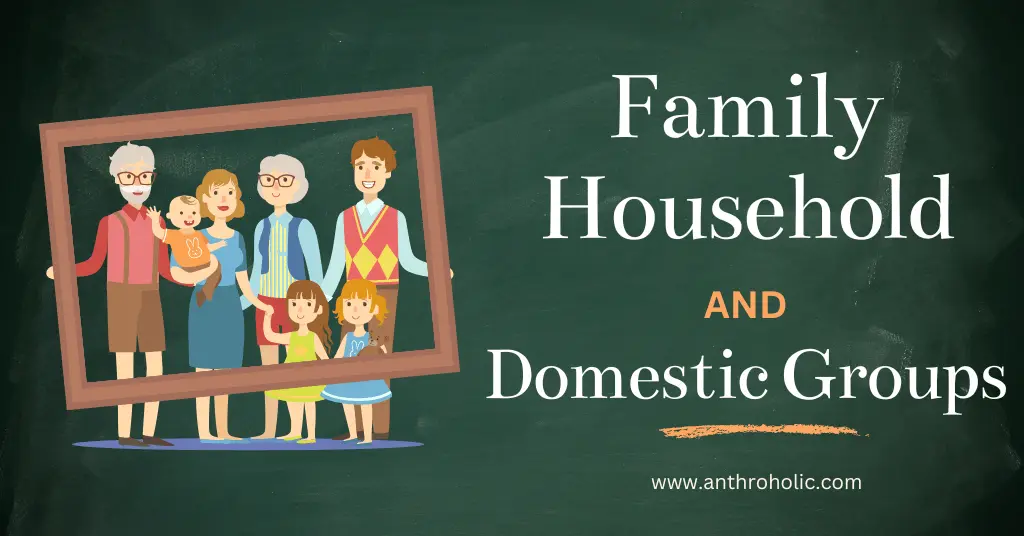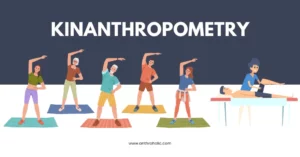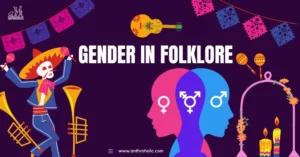AI Answer Evaluation Platform Live Now. Try Free Answer Evaluation Now
Family Household and Domestic Groups
In every society, families, households, and domestic groups are foundational units that help form the social, cultural, and economic fabric. These entities not only shape individual lives and identities but also have a significant impact on community structures and national policies. The concept of these groups has evolved over time, influenced by societal, cultural, and economic changes, and varies significantly across different regions and cultures. Understanding these units’ functions, structures, and dynamics can provide profound insights into society at large.

Family: The Fundamental Social Unit
Definition and Types
The term “family” is broad and can represent different forms of relationships and structures. Traditionally, a family is considered a group of people related by birth, marriage, or adoption who live together. However, the modern understanding of family has expanded to include chosen families, single-parent families, cohabiting couples, and families with same-sex parents (Cherlin, 2013).
Key family types include:
- Nuclear family: This structure comprises two parents and their children.
- Extended family: This involves a nuclear family plus other relatives such as grandparents, aunts, uncles, and cousins.
- Single-parent family: One parent raises the children due to circumstances like divorce, death, or personal choice.
- Blended family: This consists of a couple and their children from current and previous relationships.
Evolution and Societal Impact
The structure of families has evolved significantly over the centuries, impacted by socioeconomic factors, cultural norms, legislation, and even technological advancements. The nuclear family, once considered the standard in Western societies, has seen a decline with the rise of diverse family types reflecting societal changes (Coontz, 2005). Families, regardless of their structure, play a significant role in shaping individual identities and societal norms.
Household: More Than Just a Living Space
Definition and Types
A household is defined as one or more persons—related or unrelated—who live together in a particular housing unit. Thus, a household may consist of a family, multiple families, single individuals, or groups of unrelated individuals. The United Nations (2017) identifies several household types:
- One-person households
- Multi-person households:
- Nuclear family households
- Extended family households
- Composite households (consisting of more than one family)
- Non-family households
Economic Role and Impact on Society
Households play a vital role in economies as the primary unit for consumption, production, and wealth accumulation. The structure and size of households influence consumer behavior, labor supply, and housing demand, shaping economic policies and market trends (Bianchi, 2000). Sociologically, households also shape individuals’ lifestyles and social behavior, influencing societal norms and structures.
Domestic Groups: Shared Residence and Economic Cooperation
Definition and Types
Domestic groups, an anthropological concept, refer to a group of people living together who cooperate economically and typically share a common kitchen. Domestic groups are more diverse than family or household structures, capturing various living arrangements from collective communities to shared student accommodations.
There are two main types of domestic groups (Levinson & Ember, 1996):
- Conjugal domestic groups: Consist of a married couple and their children.
- Non-conjugal domestic groups: Include siblings living together, or individuals sharing a residence without being related.
Impact on Individuals and Communities
Domestic groups significantly impact socialization, economic cooperation, and resource sharing among individuals. They also promote social cohesion, mutual support, and community integration.
Comparing Family, Household, and Domestic Groups
| Parameter | Family | Household | Domestic Groups |
|---|---|---|---|
| Composition | Based on kinship or legal ties | Based on shared residence | Based on shared residence and economic cooperation |
| Types | Nuclear, extended, single-parent, blended | One-person, multi-person (family, non-family) | Conjugal, non-conjugal |
| Societal Impact | Shapes individual identity and societal norms | Influences economic policies, consumer behavior | Promotes social cohesion, resource sharing |
Conclusion
Family, household, and domestic groups are interrelated concepts, each capturing unique aspects of human living arrangements. They are integral to understanding individual identities, societal norms, economic patterns, and cultural practices. As society continues to evolve, it will be fascinating to see how these basic units adapt and transform, shaping and being shaped by the world around them.
References
- Bianchi, S. M. (2000). Family interaction, social capital, and trends in time use (Study No. 751). American Sociological Association.
- Cherlin, A. J. (2013). Public and private families: An introduction. McGraw-Hill.
- Coontz, S. (2005). Marriage, a history: How love conquered marriage. Viking.
- Levinson, D., & Ember, M. (1996). Encyclopedia of cultural anthropology (Vol. 1). Henry Holt and Company.
- United Nations. (2017). Household size and composition around the world 2017. United Nations, Department of Economic and Social Affairs, Population Division.



